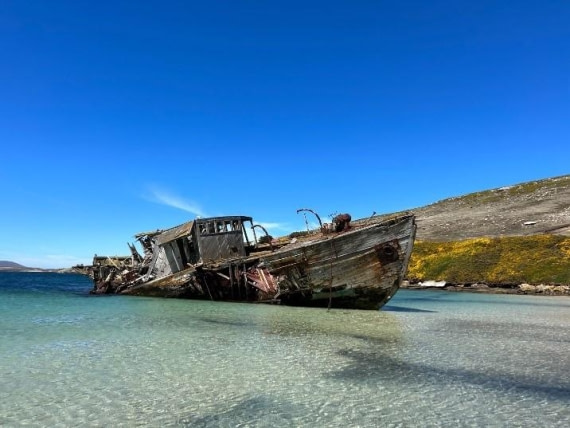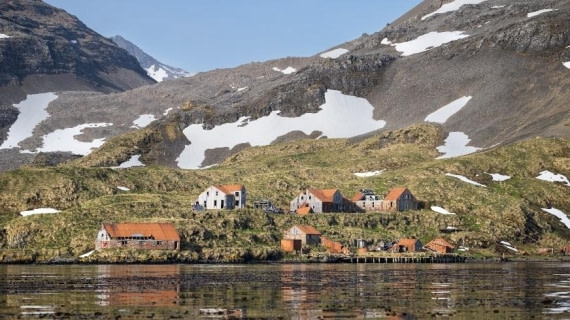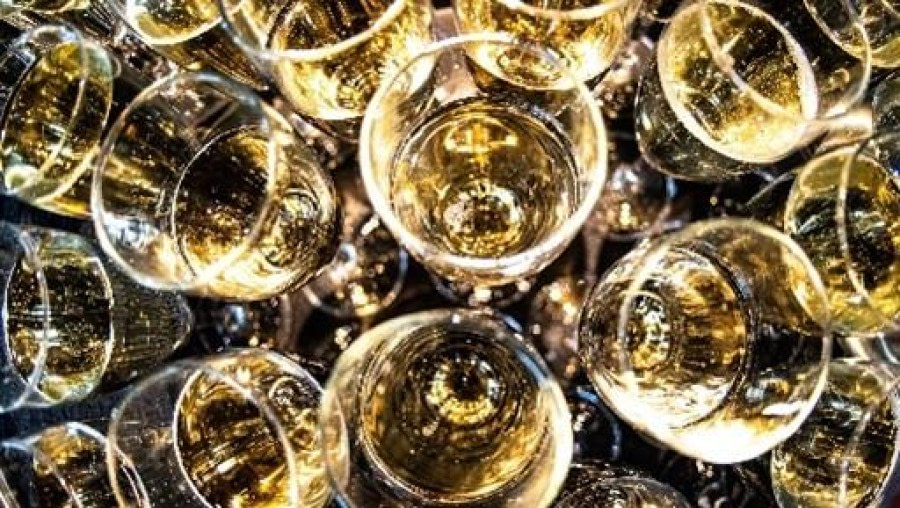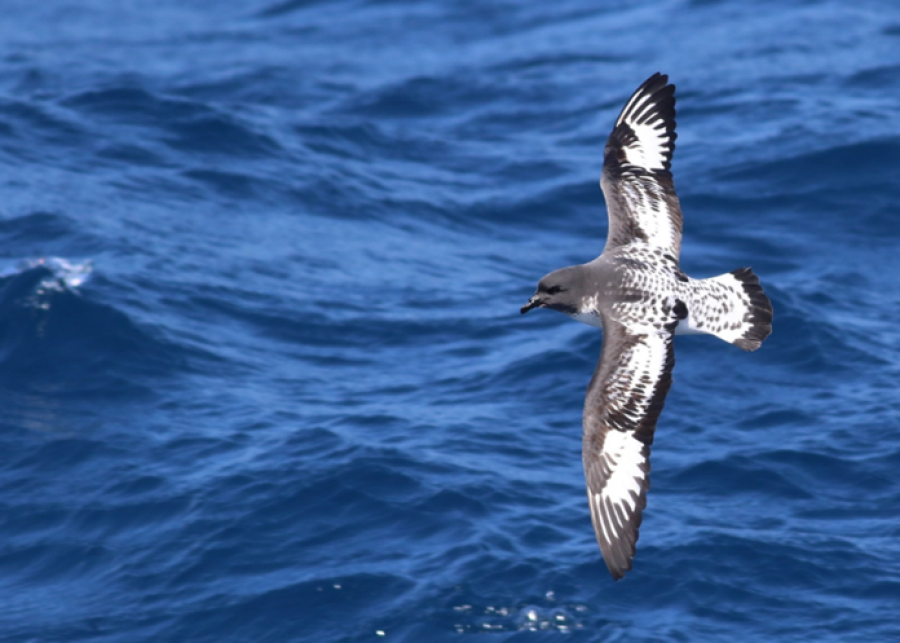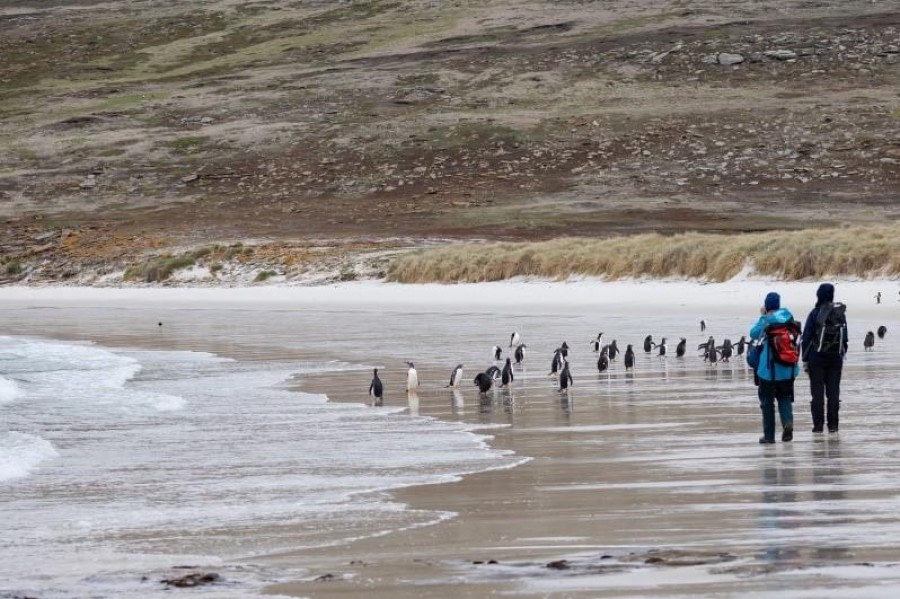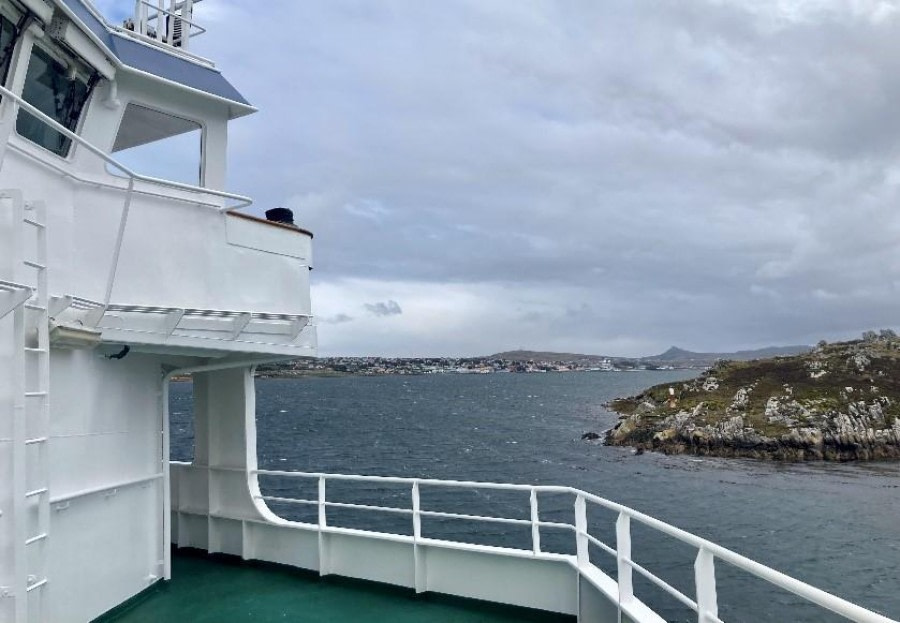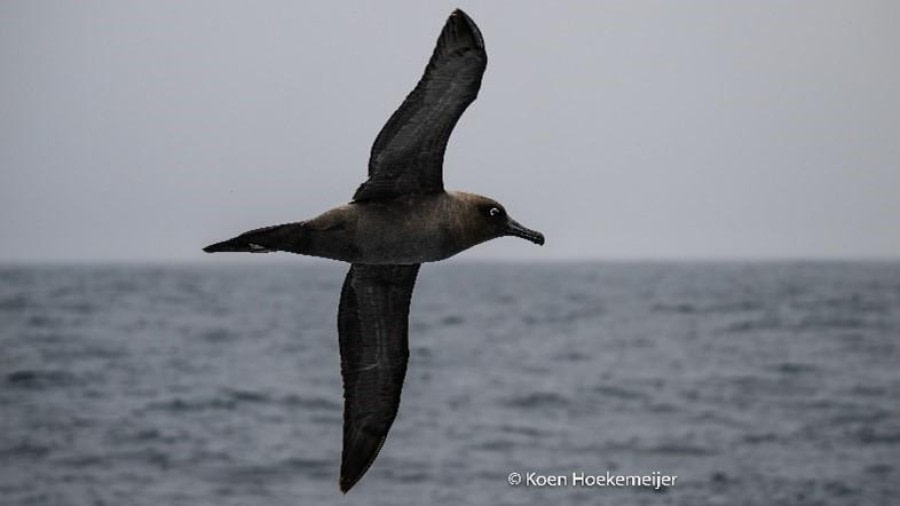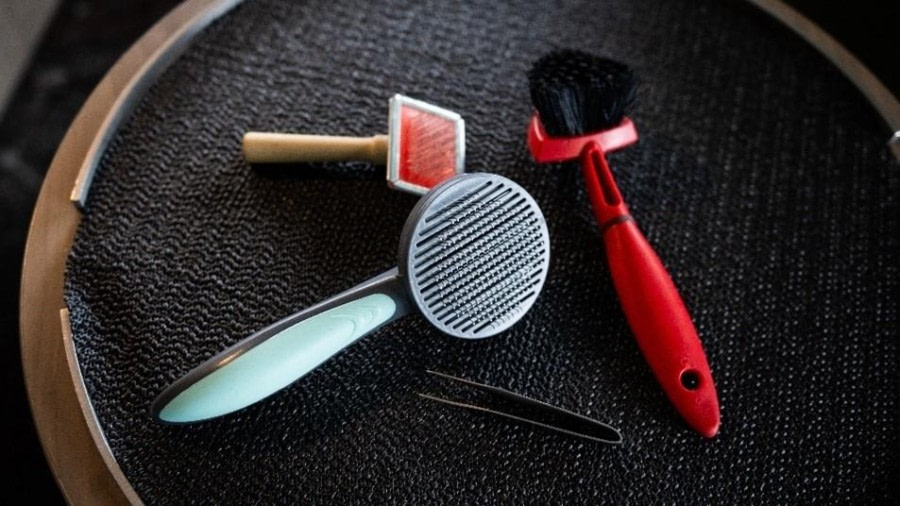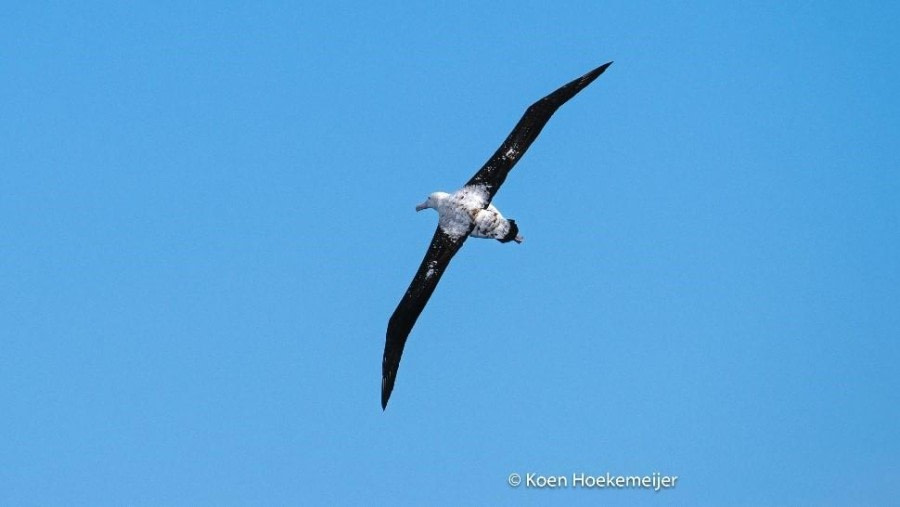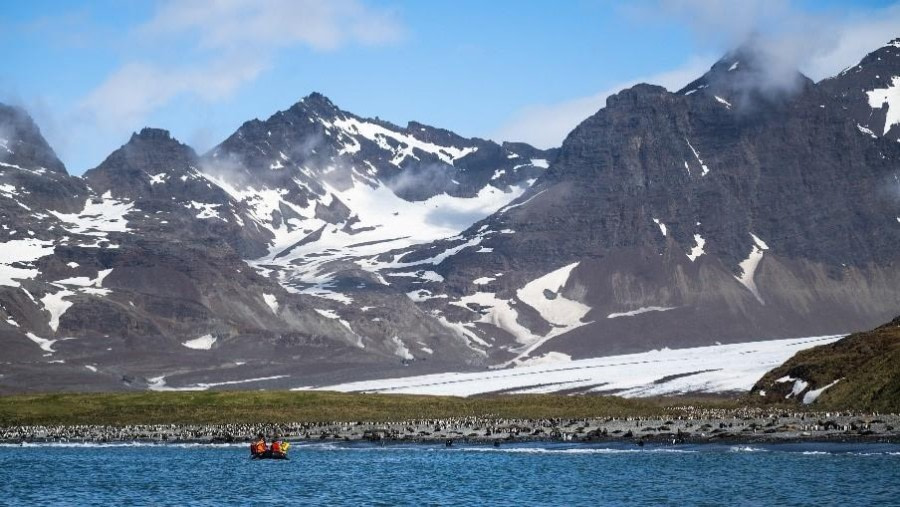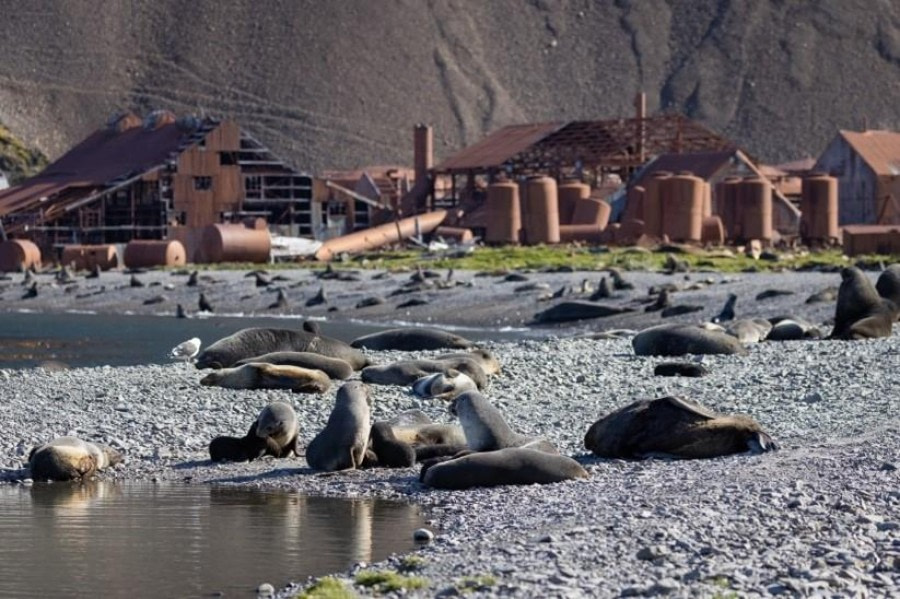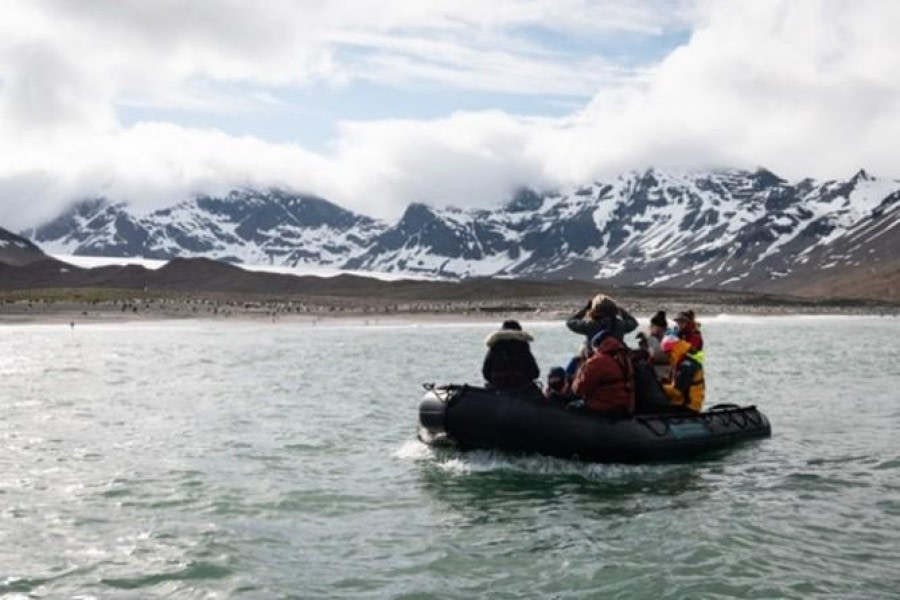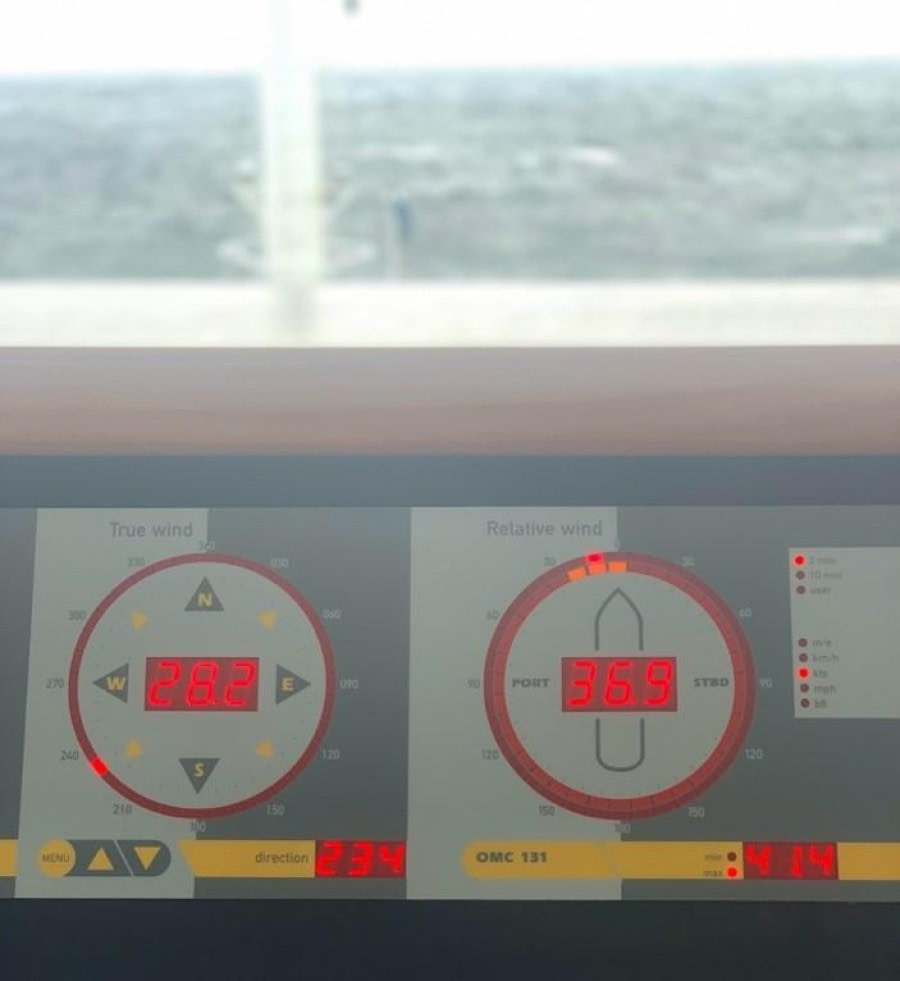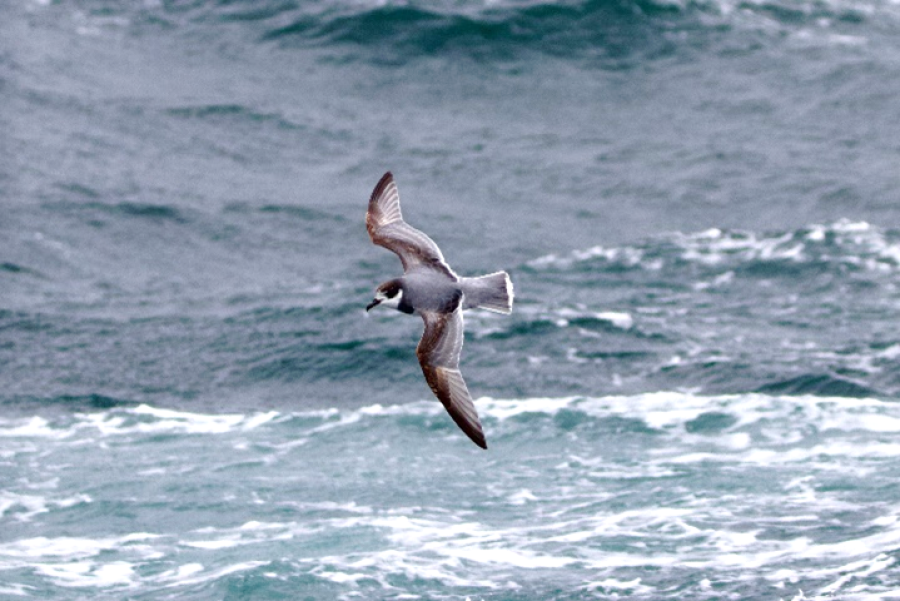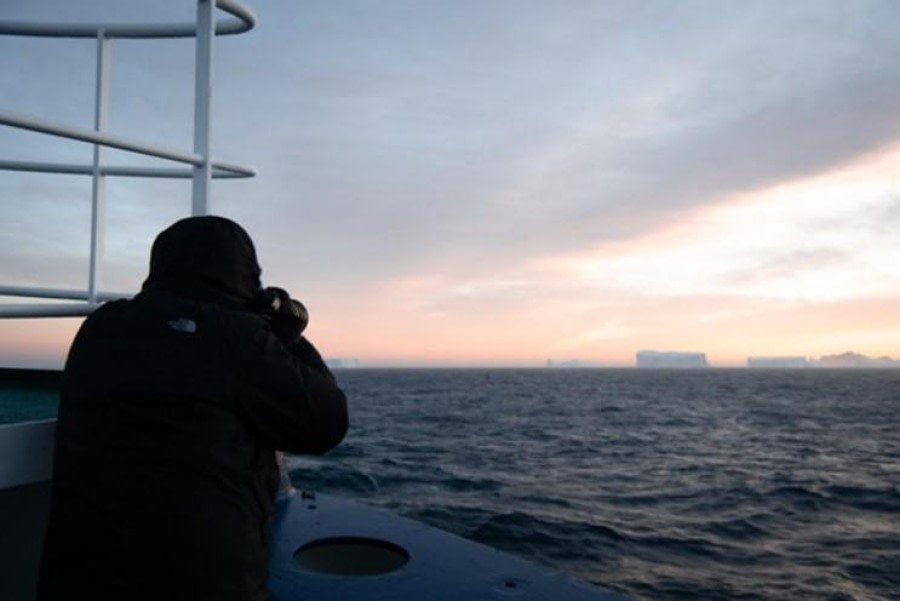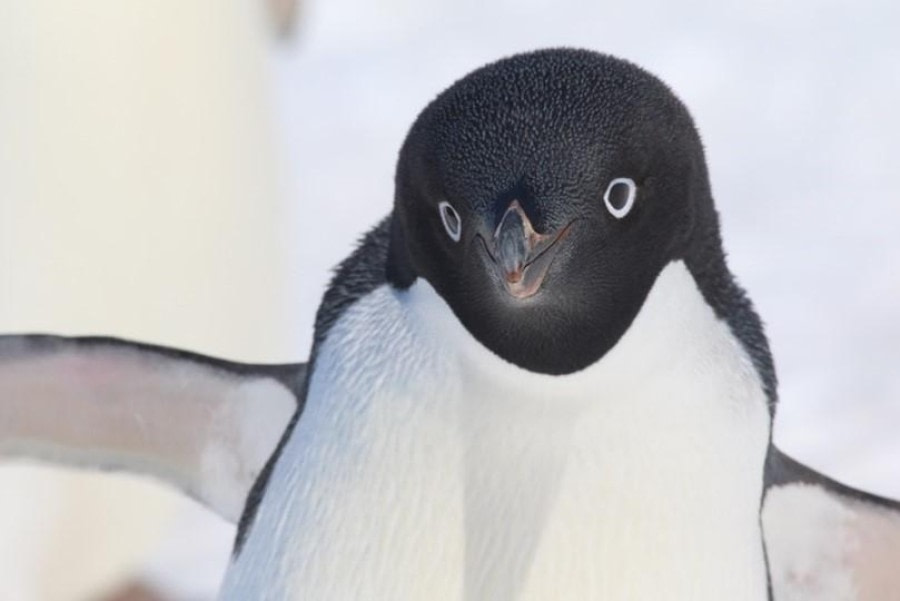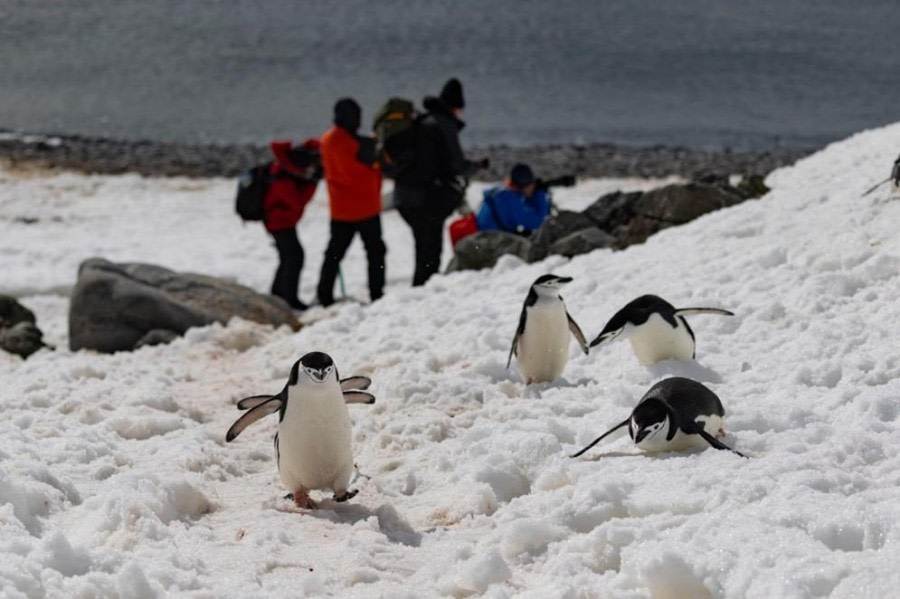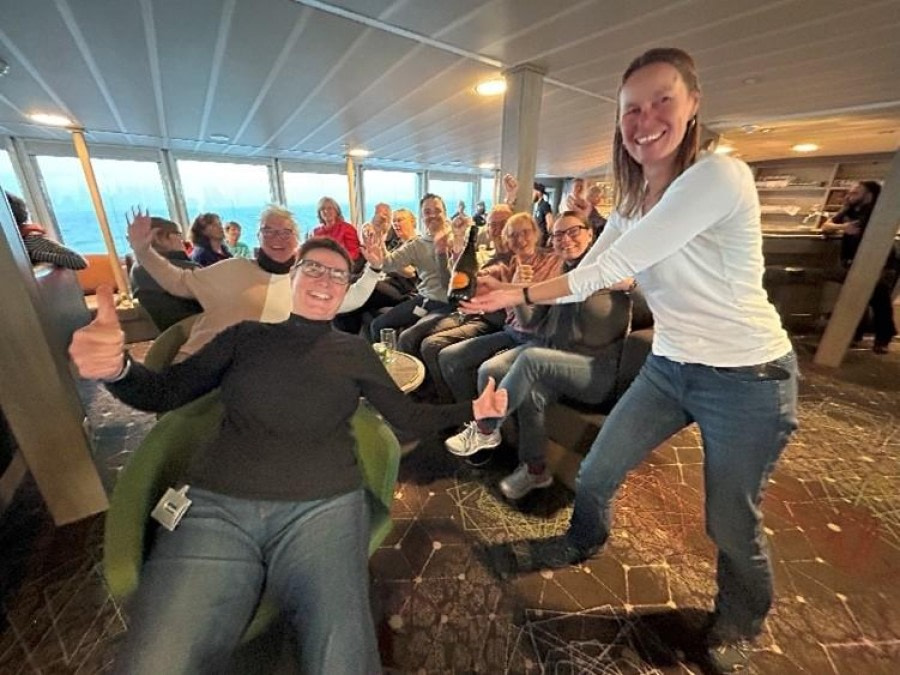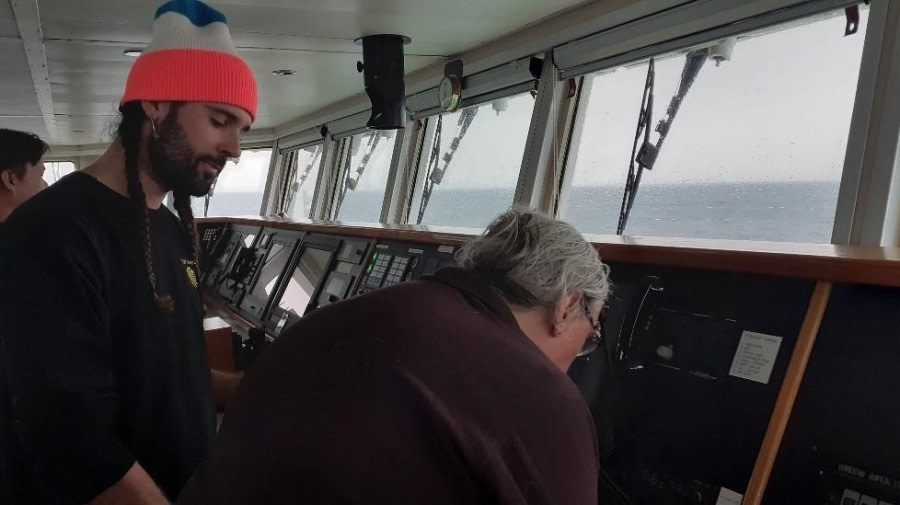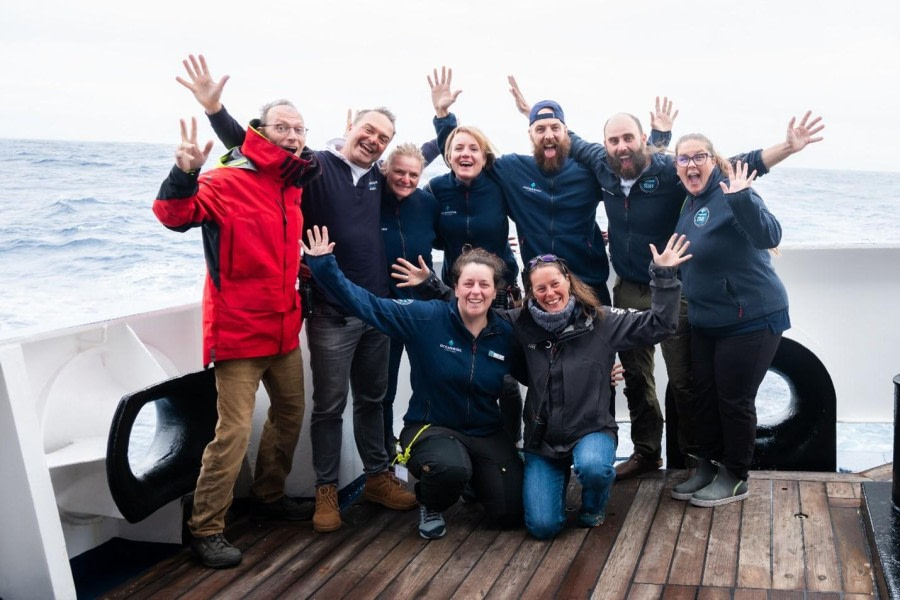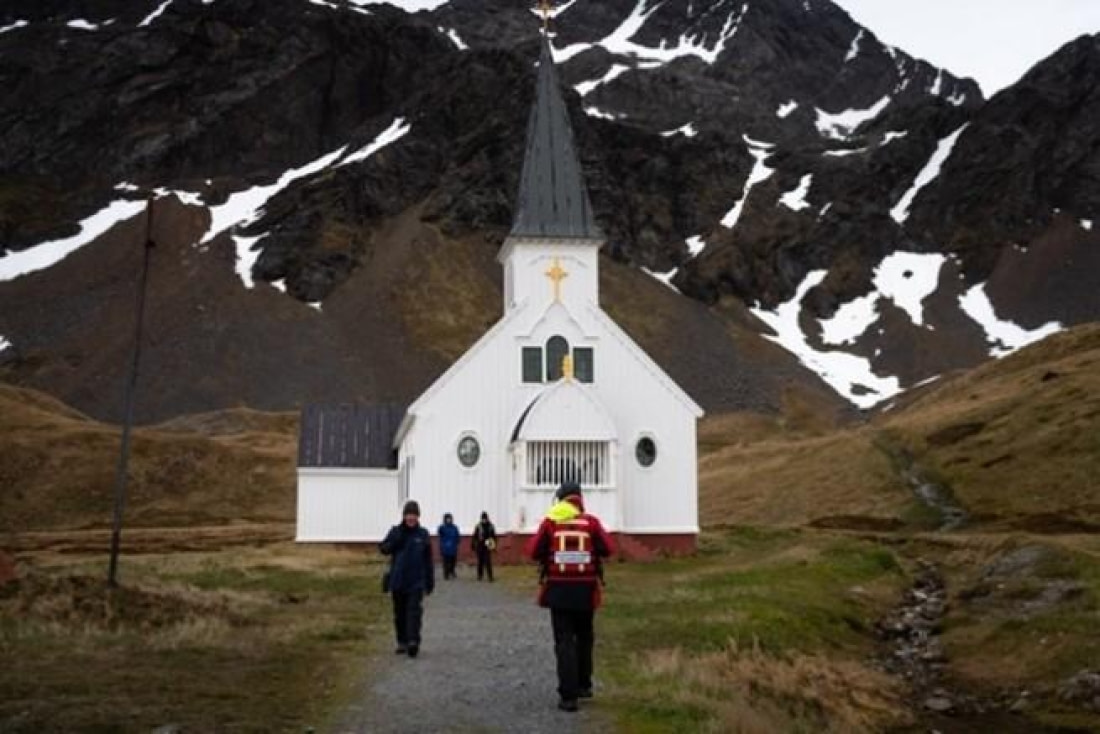| Date: |
25.11.2023 |
| Position: |
51°43.308’S / 061°18.020’W |
| Wind: |
W 4 |
| Weather: |
Sunny |
| Air Temperature: |
+13 |
We awoke bright and early for our first day of landings. Plancius was anchored overnight in front of our first landing site in The Falklands: New Island. We took the Zodiacs to shore at Coffin’s Harbor. The landing site was right next to the wreck of Protector III, an old wooden ship originally built in the 1940s as a minesweeper. It eventually found itself in the Falklands and was beached at New Island in 1969, slowly decaying in the sand ever since.
There is a small museum on the island called the Captain Bernard Museum, named after a whaling captain who was marooned on the island. The museum has many artifacts from the animals that live on the island, some history from the sealing and whaling days, and information about the island.
Kelp geese with their little goslings were roaming the shoreline as we stowed our lifejackets and began exploring. We followed the old dirt road tracks across the island to an area where the seabirds were nesting. Upland and ruddy-headed geese were wandering the grassy fields, some with goslings. Straited caracara and many passerines also flew over the fields occasionally as we made our way.
The views at the bird colony were incredible. As you approach the view from the edge, your eyes are drawn down the cliff faces. Black-browed albatross, Rockhopper penguins, and Imperial Shags were all piled together in one big colony. While these birds are very different in size and shape from one another, they do live a similar lifestyle. Albatrosses and cormorants were flying in and around the nesting area to either relieve their mates or bring in new nesting materials. Many birds were sitting on eggs and occasionally would get up and stretch, allowing us to see the eggs underneath them.
After taking in the views at the colony on the cliffs, there was an opportunity to walk through the small settlement of New Island to access the beach viewing area, where some gentoo penguins came to shore and walked up toward their nearby colony.
North Harbor: 51° 42.031’ S 61° 15.181’ W
During lunch we repositioned a few miles north to another location on New Island: North Harbor. A long, shallow beach awaited us at low tide, making Zodiac operations tricky. We successfully landed and began walking up the sand dune to the wildlife. Ducks and geese were swimming and roaming near shore. Magellanic oystercatcher calls filled the air. One Magellanic penguin stood on the shore, surveying the walk to the water at low tide. As we crested the first hill, we came to a pond where we saw more Magellanic penguins and a variety of geese.
We climbed higher and saw straited caracara scattered on the hillside, offering great views and photo opportunities. And at the crest of the hill was a gentoo penguin colony. We were delighted to see and hear tiny chicks in the colony. Some parents were brooding one newly hatched chick and an unhatched egg. Other adults were still bringing in nesting materials to please their mate, causing chaos and drama as they ran past other nests. Occasionally a caracara would fly over or walk around the colony as well, sending the penguins into high alert.
Downhill towards the west facing beach, there were more Gentoo colonies, one with a sneaky Macaroni penguin resting at it. The Macaroni had its head tucked down and was sleeping for most of the afternoon, but with binoculars you could spot it amongst the Gentoos. If you were patient, you could catch a photo with three different genus of penguin in it: a magellanic, a macaroni, and a gentoo all in one frame.
The Magellanic belongs to the banded penguins (genus: Spheniscus), the Macaroni belongs to the crested penguins (genus: Eudyptes), and the Gentoo belongs to the brushtail penguins (genus: Pygoscelis).
At the beach, more and more Gentoos were coming ashore and resting on the sand dune before walking up to their colony. It was great fun to watch them surf the waves and swim around the shoreline. It’s not often that Gentoos use white sandy beaches throughout their range, but here on the Falklands they do. A few Magellanic penguins came ashore throughout the afternoon with the Gentoos. At the end of the beach, there was also a family of Steamer ducks with ducklings in tow.
Partway through the landing, an extended walk was offered to those who wanted to see an additional Black-browed albatross colony. The route weaved past another colony of Gentoo penguins and over the hill to the cliff faces, where more albatrosses and Rockhopper penguins were nesting. Many albatrosses were actively courting each other on stunning cliff views.
At the end of the landing, it was hard to walk away from such a beautiful place. As we geared back up on shore to get in the Zodiacs, the rising tide proved to again be tricky for getting back to Plancius. After some human power from the expedition team and use of the engines, we loaded out of the shallow water and made our way back on board to set sail for Stanley.




